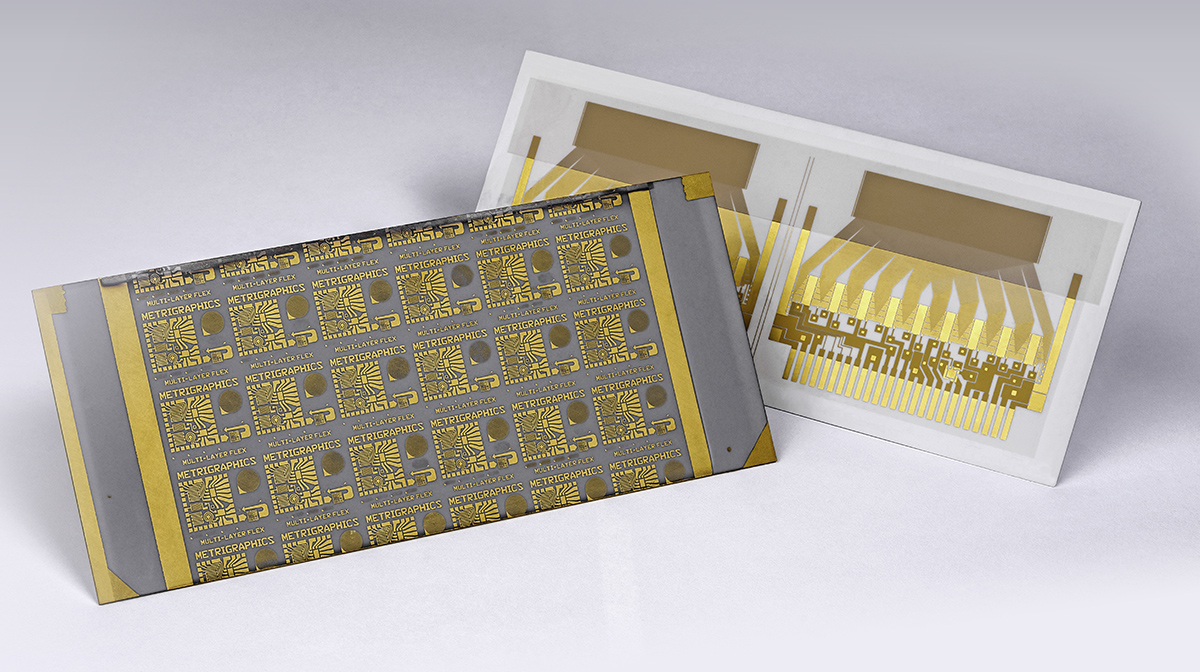
A Recipe for Electroforming Success: Part 1
Precision electroforming is an additive process in which 2-D and 3-D microstructures are formed by electrochemically depositing metal into a precisely formed photoresist mold. Electroforming is ideal for fabricating micron-scale, metallic components as well as for making injection molds used for forming nonmetallic microstructures with nano-scale features.
Choosing a qualified manufacturing partner is critical in achieving total success. By breaking down our own expertise we hope it provides you with a foundation for creating effective requests for proposals (RFPs) and vetting partners for your electroformed component manufacturing needs.
Unlimited Geometries
We can create three-dimensional, single or complex, multilayer microstructures with very high aspect ratios. (Table 1 shows photoresist aspect ratio guidelines.) The geometric options are unlimited because the X, Y, Z structural plane of each layer is formed by a photoresist image. Such structures may be freestanding or connected to comb-like supports to facilitate handling or fixture mounting. We offer micronozzles, inject nozzles, orifice plates, nozzle plates, slits, screens, mesh, disks, and more.
| Photoresist | Plated Metals | Minimum Feature | Max Aspect Ratio |
|---|---|---|---|
| AZ1500, AZ9200 | NiCo, Ni, Cu, Au | 1-12 microns | 1:1 |
| AZ9200, NR-9, NR-5, SU-8 | NiCo, Ni, Cu, Au | 12-50 microns | 2:1, 5:1 (BE) |
| NR-9, SU-8 | NiCo, Ni, Cu | 50-100 microns | 2:1, 10:1 (BE) |
| SU-8 | NiCo, Ni, Cu | 100-200 microns | 15:1 (BE) |
| SU-8 | NiCo, Ni, Cu | 200-500 microns | 10:1 (BE) |
| SU-8 | NiCo, Ni, Cu | 500-1,100 microns | 5:1 (BE) |
Our electroforming process employs a wide variety of plated materials and commercially available photoresists to produce three-dimensional microstructures with very high aspect ratios possible. Note that aspect ratio depends on the photoresist pattern.
Sample applications:
• Micronozzles
• Microstructures
• Slits
• Micro screen/mesh
• Disks
• Embossing tools
Commonly used materials:
• Nickel cobalt
• Nickel
• Pure gold
• Hard gold
A Recipe for Success
Electroforming is an electroplating process that employs proprietary recipes carried out under carefully monitored conditions by applying a tightly defined set of best manufacturing practices.
Here’s how it works:
The process deposits metal onto a (typically glass) mandrel that has been coated with a very thin metal layer covered with photoresist. The photoresist is photoimaged, meaning that it doesn’t cover the metal everywhere but exposes a pattern of openings through which the underlying metal is exposed. The pattern is created using photolithography by light shining through a mask, or stencil, onto the photoresist.
As more and more metal is deposited, a three-dimensional structure rises from the stenciled pattern.
For example, if the photoresist were patterned in the shape of a donut, the resulting structure would have the shape of a cylinder with walls as thick as the donut and a central opening only as wide as the donut hole. If the finished devices are to be freestanding, they can be peeled off the mandrel once all metal is added. (We use a proprietary adhesive agent that enables removal from the mandrel surface following electroplating.) Alternatively, the component may remain attached (to a fixture, for example).
Depositing metal to the height of the photoresist layer results in a cylinder with vertical walls. Sometimes, however, the desired shape is not vertical but rather funnel shaped with rounded edges. For more information, please ask for our Electroforming Design Guide.
Depending on the resolution of the mask image, electroformed features can be extremely tiny — down to 10 microns in our process. The size of openings, like a nozzle orifice, can be as small as 25 microns. Hole diameter depends on the amount of metal deposited around an opening in the photoresist. As more metal is added, diameters shrink, eventually to zero if enough metal were to be added.
Opening size, however, can be extremely well controlled based on variables that (among other things) determine the rate of metal deposition. These variables are among a number of factors critical to our customers’ success in achieving their design goals.

